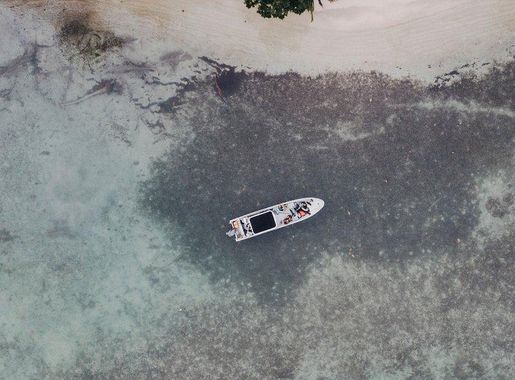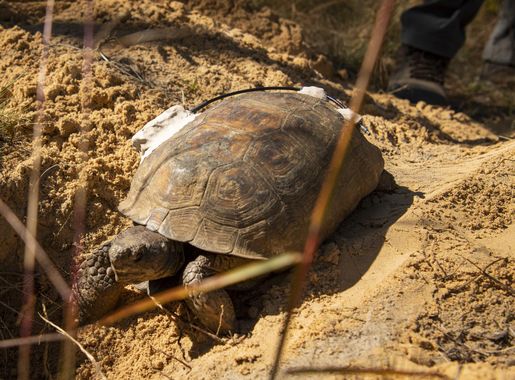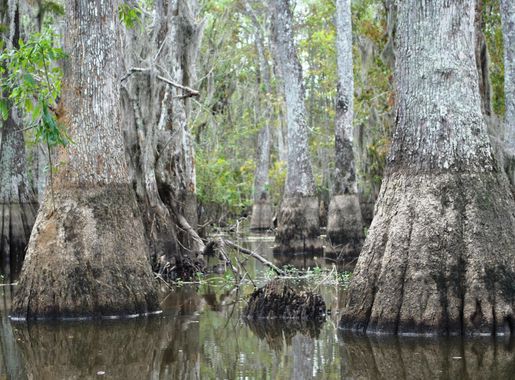
The Enchanting Honey Island Swamp
Explore Honey Island Swamp: Louisiana's Pristine Wetland Teeming with Wildlife and Mystical Beauty
Nestled in the heart of Louisiana, Honey Island Swamp is an untouched paradise teeming with wildlife and lush greenery. This pristine wetland is one of the most unspoiled river swamps in the United States, offering visitors a unique glimpse into the natural beauty of the region. The swamp spans over 70,000 acres and is home to a diverse array of flora and fauna, including alligators, wild boars, and a plethora of bird species. A guided boat tour is the best way to explore this enchanting destination. As you navigate the winding waterways, you'll be treated to sights of cypress trees draped in Spanish moss and the occasional splash of an alligator slipping into the water. Knowledgeable guides share fascinating insights into the ecosystem and the folklore of the area, including tales of the mysterious Honey Island Swamp Monster. For those seeking a more immersive experience, kayaking through the swamp is an option. Paddling through the serene waters allows for close encounters with the native wildlife and a tranquil escape from the hustle and bustle of modern life. Whether you're a nature enthusiast or simply looking for a unique adventure, Honey Island Swamp offers an unforgettable experience in the heart of Louisiana.
Local tips in Honey Island Swamp
- Book a guided boat tour to learn about the swamp's ecosystem and folklore.
- Visit during spring or fall for the best weather and wildlife viewing opportunities.
- Wear insect repellent and lightweight clothing to stay comfortable during your visit.
- Bring a camera with a good zoom lens to capture the diverse wildlife.
- Consider a kayaking tour for a more intimate and adventurous experience.
The Enchanting Honey Island Swamp
Nestled in the heart of Louisiana, Honey Island Swamp is an untouched paradise teeming with wildlife and lush greenery. This pristine wetland is one of the most unspoiled river swamps in the United States, offering visitors a unique glimpse into the natural beauty of the region. The swamp spans over 70,000 acres and is home to a diverse array of flora and fauna, including alligators, wild boars, and a plethora of bird species. A guided boat tour is the best way to explore this enchanting destination. As you navigate the winding waterways, you'll be treated to sights of cypress trees draped in Spanish moss and the occasional splash of an alligator slipping into the water. Knowledgeable guides share fascinating insights into the ecosystem and the folklore of the area, including tales of the mysterious Honey Island Swamp Monster. For those seeking a more immersive experience, kayaking through the swamp is an option. Paddling through the serene waters allows for close encounters with the native wildlife and a tranquil escape from the hustle and bustle of modern life. Whether you're a nature enthusiast or simply looking for a unique adventure, Honey Island Swamp offers an unforgettable experience in the heart of Louisiana.
When is the best time to go to Honey Island Swamp?
Iconic landmarks you can’t miss
Audubon Aquarium
Explore the vibrant underwater world at the Audubon Aquarium in New Orleans, an educational and immersive experience for all ages.
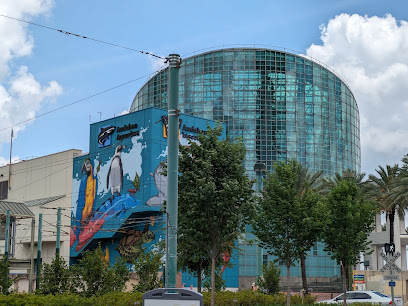
Audubon Insectarium
Uncover the fascinating world of insects at the Audubon Insectarium, a must-visit museum in New Orleans, offering interactive exhibits and a stunning butterfly garden.
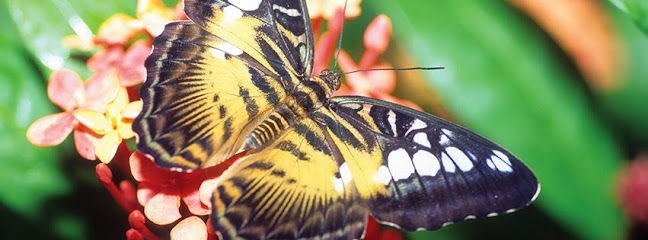
Honey Island Swamp Tours
Discover the allure of Honey Island Swamp, where adventure meets the breathtaking beauty of Louisiana's wildlife and wetlands.
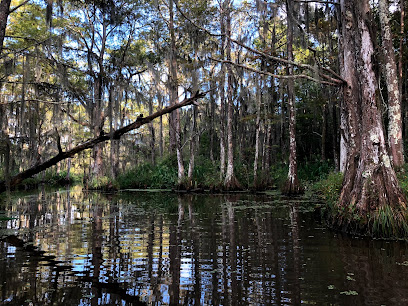
Maurepas Swamp Wildlife Management Area
Explore the serene beauty of Maurepas Swamp Wildlife Management Area, a wildlife refuge in Louisiana teeming with biodiversity and breathtaking landscapes.
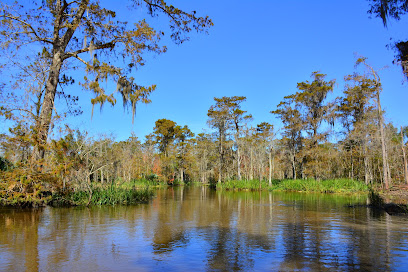
Pearl River Wildlife Management Area
Experience the tranquility of Pearl River Wildlife Management Area, a natural refuge teeming with wildlife and outdoor adventure in Louisiana.
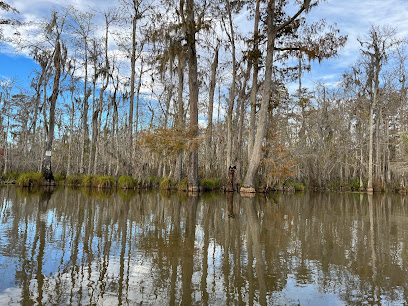
Pearl River Swamp Tours
Experience the enchanting wilderness of Louisiana's Pearl River Swamp Tours, a haven for wildlife enthusiasts and nature lovers alike.
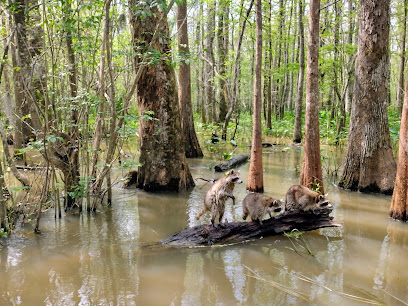
Audubon Louisiana Nature Center
Explore the Audubon Louisiana Nature Center, a serene nature preserve in New Orleans filled with lush landscapes, diverse wildlife, and educational experiences.
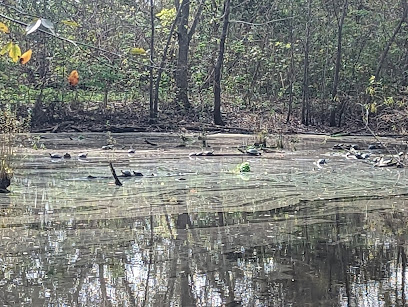
Bogue Chitto National Wildlife Refuge
Nature's haven in Louisiana, Bogue Chitto National Wildlife Refuge offers serene landscapes and diverse wildlife for an unforgettable outdoor adventure.
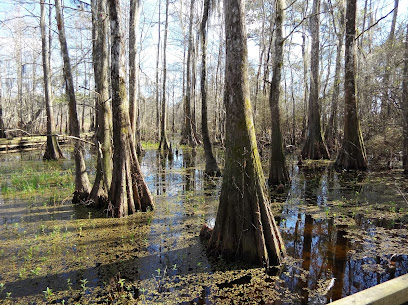
US Custom House
Discover the US Custom House, a stunning historical landmark in New Orleans that embodies the city's rich maritime heritage and architectural beauty.
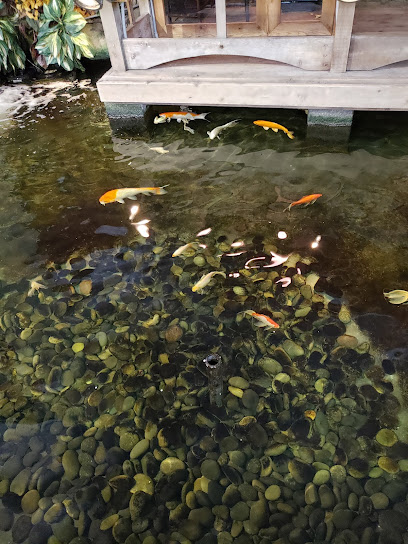
Pearl River - Honey Island Swamp Museum & Research Center
Delve into the enchanting ecosystems and local history at the Pearl River - Honey Island Swamp Museum, a unique experience in Louisiana's wetlands.
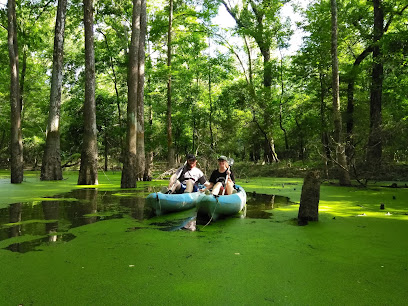
Cat Island Cypress
Explore the magical beauty of Cat Island Cypress in St. Francisville, Louisiana, where ancient trees and serene landscapes create an unforgettable escape.
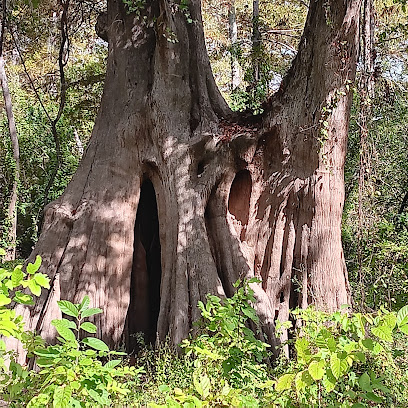
Honey Island Swamp Kayak Tours - Guided Bayou Tours
Discover the breathtaking beauty of Honey Island Swamp with guided kayak tours that showcase Louisiana's unique wildlife and lush landscapes.

Honey Island Swamp Monster
Explore the enchanting Honey Island Swamp Monster and uncover the thrilling folklore of Louisiana's unique ecosystem.

Unmissable attractions to see
Cajun Encounters Tour Company
Experience the breathtaking sights and sounds of Louisiana's swamps with Cajun Encounters—where adventure meets culture in the heart of the bayou.

Bayou Sauvage Urban National Wildlife Refuge
Experience the natural beauty of Louisiana at Bayou Sauvage Urban National Wildlife Refuge, a serene escape for wildlife enthusiasts and nature lovers.
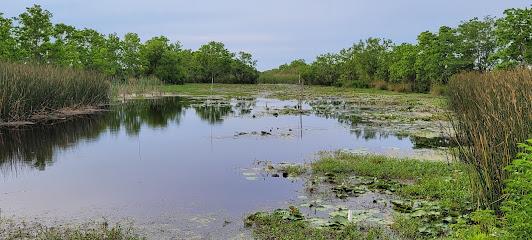
Pearl River Wildlife Management Area
Explore the Pearl River Wildlife Management Area, a natural paradise teeming with diverse wildlife and stunning landscapes in Louisiana.

Fairview-Riverside State Park
Experience the serene beauty and outdoor adventures at Fairview-Riverside State Park, a family-friendly destination in Louisiana's natural landscape.
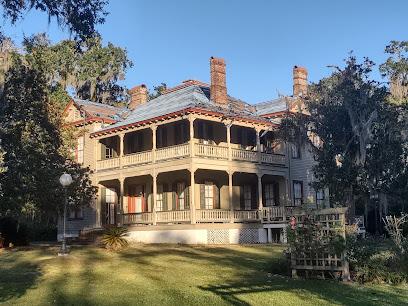
Abita Mystery House / UCM Museum
Explore the whimsical wonders of Abita Mystery House, a quirky museum in Abita Springs showcasing local art, history, and eccentricities in a fun environment.
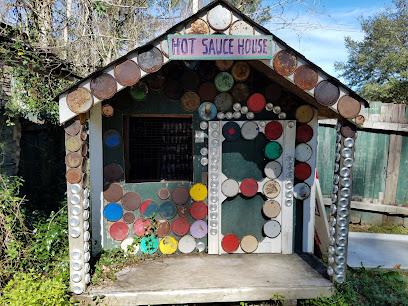
Insta-Gator Ranch & Hatchery
Experience the thrill of alligator encounters at Insta-Gator Ranch & Hatchery in Covington, Louisiana—an unforgettable adventure for the whole family.
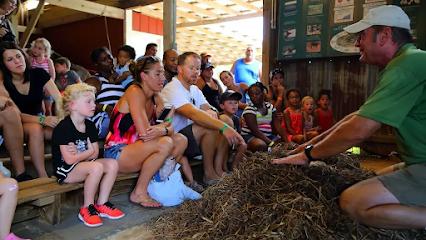
Big Branch Marsh National Wildlife Refuge
Explore the beautiful ecosystems of Big Branch Marsh National Wildlife Refuge, a wildlife haven in Louisiana perfect for nature lovers and outdoor enthusiasts.

Camp Salmen Nature Park
Experience the tranquility and natural beauty of Camp Salmen Nature Park, a perfect destination for outdoor enthusiasts and families in Slidell, Louisiana.
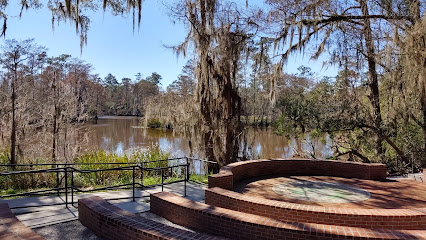
Bogue Chitto National Wildlife Refuge
Explore the breathtaking beauty of Bogue Chitto National Wildlife Refuge, a haven for wildlife and outdoor activities in Louisiana.
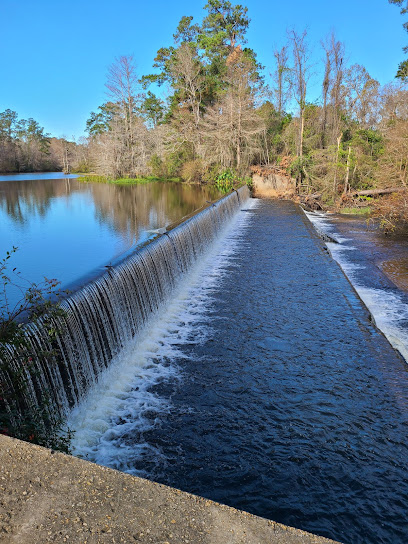
Boating Adventures - Louisiana Tours and Adventures -Tchefuncte Capt Mike
Discover the enchanting waterways of Louisiana with Tchefuncte Capt Mike's unforgettable boating adventures, perfect for all nature lovers.

Maritime Museum Louisiana
Explore Louisiana's maritime heritage at the Maritime Museum Louisiana, where history and culture come alive along the scenic Tchefuncte River.
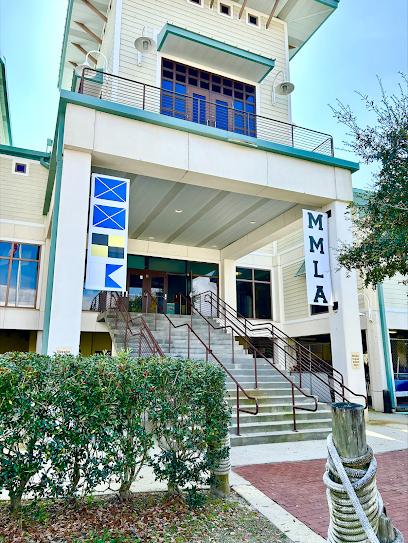
N’awlins Luxury Tours
Experience the magic of New Orleans with N’awlins Luxury Tours, where unforgettable adventures await in the heart of the Crescent City.

Otis House
Explore the historical significance and architectural beauty of Otis House, a captivating museum in Madisonville, Louisiana, that brings local history to life.

Pearl River - Honey Island Swamp Museum & Research Center
Explore the captivating history and unique ecosystems of Louisiana at the Pearl River - Honey Island Swamp Museum & Research Center.
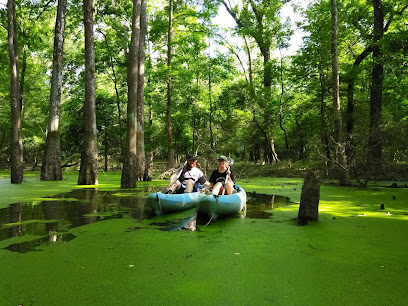
Celebration Tours LLC
Discover the heart and soul of New Orleans with Celebration Tours LLC, where unforgettable experiences await in every corner of the city.

Essential places to dine
Cracker Barrel Old Country Store
Experience traditional Southern hospitality at Cracker Barrel Old Country Store in Slidell – where comfort food meets charming country store vibes.
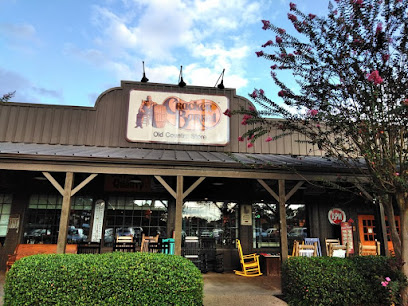
Willa Jean
Discover Willa Jean: A vibrant Southern restaurant and bakery offering delightful breakfast and lunch options in New Orleans' Warehouse District.

Landry's Seafood House
Experience exquisite seafood dining at Landry's Seafood House in New Orleans - where every meal celebrates Louisiana’s rich culinary heritage.
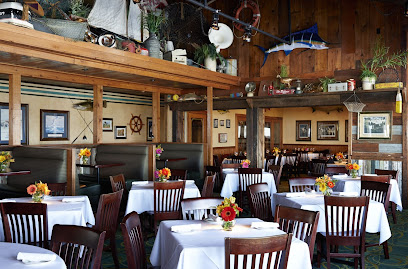
Chick-fil-A
Experience delicious chicken sandwiches and friendly service at Chick-fil-A in Slidell - perfect for family meals and on-the-go dining.

Atchafalaya
Experience the vibrant flavors of Louisiana at Atchafalaya, where Southern cuisine meets live music in the heart of New Orleans.
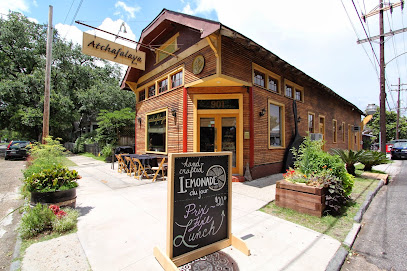
Copeland's of New Orleans
Discover the flavors of Cajun cuisine at Copeland's of New Orleans in Slidell—where Southern hospitality meets delicious food.
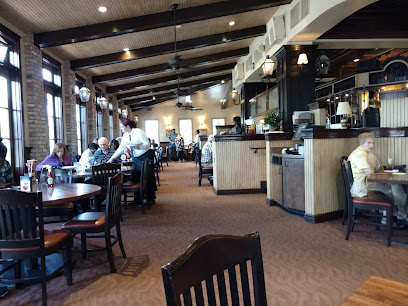
Cheddar's Scratch Kitchen
Experience authentic Southern comfort food at Cheddar's Scratch Kitchen in Slidell - where every meal is crafted from scratch with love.
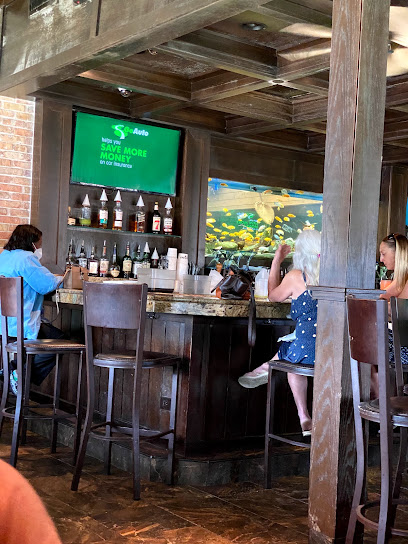
Outback Steakhouse
Discover Outback Steakhouse in Slidell – where authentic Australian flavors meet classic American cuisine for an unforgettable dining experience.
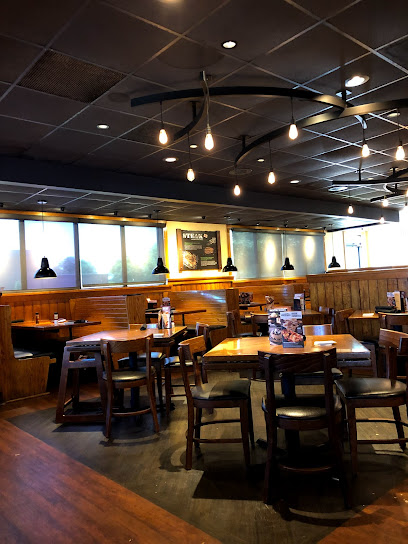
Palmettos On The Bayou
Discover authentic Louisiana cuisine at Palmettos On The Bayou, where delicious food meets stunning bayou views in Slidell.
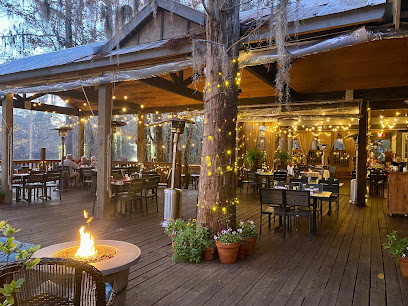
Peck's Seafood Restaurant
Discover fresh seafood delights at Peck's Seafood Restaurant in Slidell - where every meal celebrates coastal flavors.

Pontchartrain Po-Boys
Experience authentic Louisiana flavors at Pontchartrain Po-Boys - home of the best seafood po' boys in Mandeville.
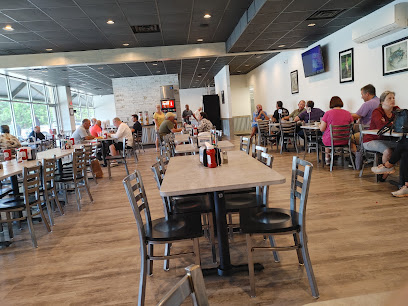
Rips On the Lake
Experience fresh seafood and breathtaking lakeside views at Rips On the Lake in Mandeville – a true gem for food lovers.

La Pines Cafe
Experience authentic Southern cuisine at La Pines Cafe in Slidell - where comfort food meets warm hospitality.

Popeyes Louisiana Kitchen
Experience authentic Cajun cuisine at Popeyes Louisiana Kitchen in Slidell - home of the legendary fried chicken and seafood delights.
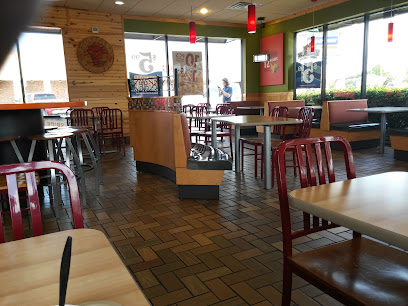
Restaurant des Familles
Experience authentic Louisiana seafood at Restaurant des Familles in Marrero—perfect for family dining with local flavors.
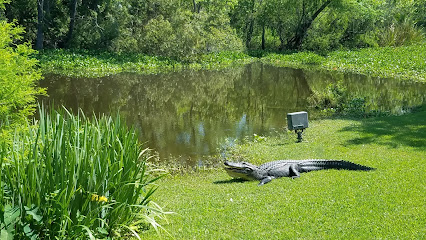
Markets, malls and hidden boutiques
Fremaux Town Center
Experience shopping, dining, and entertainment at Fremaux Town Center, the premier shopping destination in Slidell, Louisiana.

Honey Island Swamp Tours
Experience the enchanting beauty of Louisiana's Honey Island Swamp with guided tours showcasing vibrant wildlife and stunning landscapes.
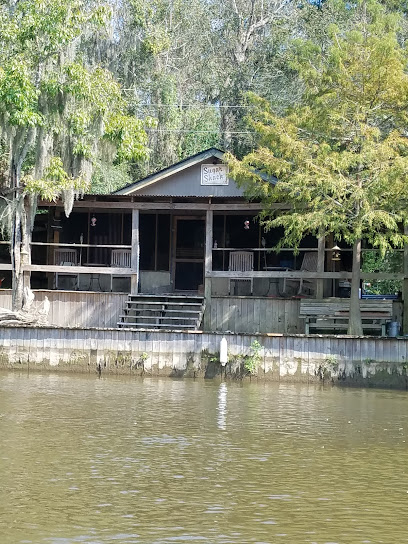
Jubilee Foods
Explore Jubilee Foods in Pearl River for a delightful grocery experience featuring local produce, friendly service, and a taste of Louisiana culture.

Mizers Foods
Explore the vibrant flavors of Louisiana at Mizers Foods – your go-to supermarket in Slidell for local delicacies and unique culinary finds.

Books-A-Million
Explore a world of books, collectibles, and fun at Books-A-Million in Slidell, Louisiana, a treasure trove for every book lover.
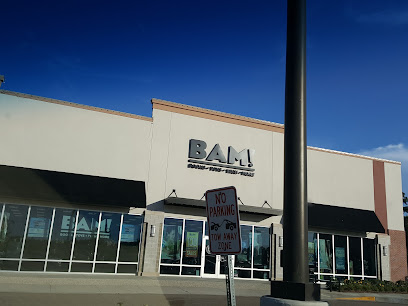
Pearl River Swamp Tours
Explore the captivating Pearl River Swamp with guided tours, offering breathtaking wildlife encounters and lush landscapes in Louisiana.

Who Dat Shoppe-Dunaway-Where The Who Dat Nation Shops
Explore the Who Dat Shoppe-Dunaway for authentic Saints memorabilia, Mardi Gras treasures, and local Louisiana crafts in Slidell.
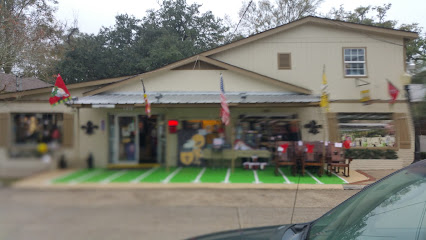
Pearl River Home & Auto
Explore Pearl River Home & Auto for exceptional hardware, friendly service, and a delightful shopping experience in Pearl River, Louisiana.
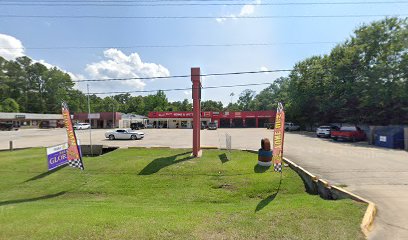
Forever New Orleans
Discover the essence of New Orleans at Forever New Orleans, your ultimate boutique for unique gifts, clothing, and local treasures.
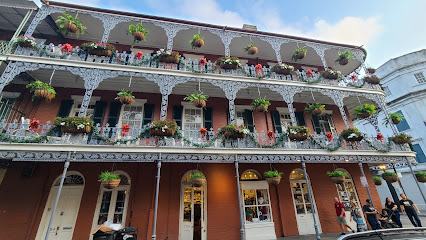
Indian Village Trading Post
Explore the Indian Village Trading Post: Your one-stop destination for gas, liquor, and vaping supplies in Slidell, Louisiana.

The Craftee Store
Explore your creativity at The Craftee Store in Slidell, Louisiana—a vibrant craft store with supplies, classes, and unique handmade treasures.
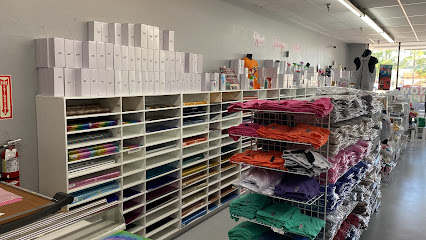
Mel's Armond Specialty Meats & Processing
Experience the best of Louisiana's culinary scene at Mel's Armond Specialty Meats & Processing, where quality meats and local flavors come together.
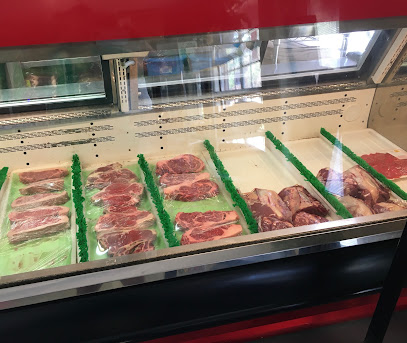
Town Crier #2
Explore Town Crier #2 in Slidell, Louisiana—your go-to destination for premium wines, craft beers, and fine cigars.

Honey Island Swamp
Explore the tranquil beauty of Honey Island Swamp, a wildlife-rich wetland in Louisiana, perfect for nature lovers and eco-adventurers.
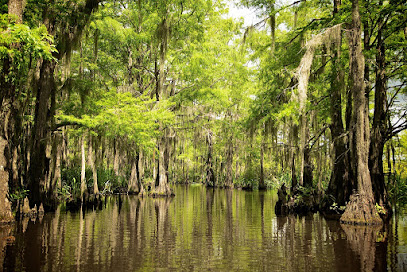
DAS SCHULERHAUS Gift Gallery & Christmas Boutique
Explore the enchanting DAS SCHULERHAUS Gift Gallery & Christmas Boutique in Mandeville for unique gifts and festive treasures that capture Louisiana's charm.

Essential bars & hidden hideouts
Copeland's of New Orleans
Experience authentic Cajun and Creole cuisine at Copeland's of New Orleans, where Southern hospitality meets vibrant flavors.
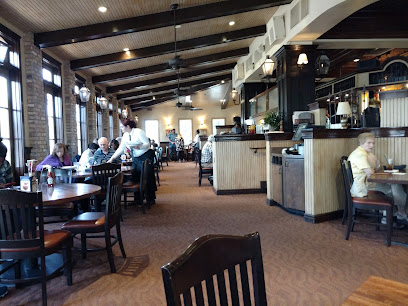
Outback Steakhouse
Experience the best of Australian flavors at Outback Steakhouse in Slidell, Louisiana, where hearty steaks meet a vibrant bar atmosphere.
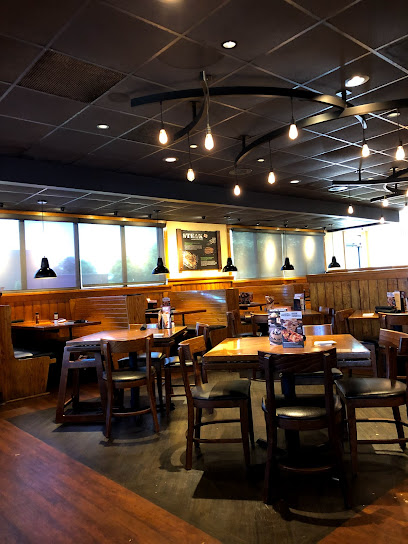
Palmettos On The Bayou
Experience the flavors of Louisiana at Palmettos On The Bayou, a contemporary restaurant offering breathtaking bayou views and Southern charm.
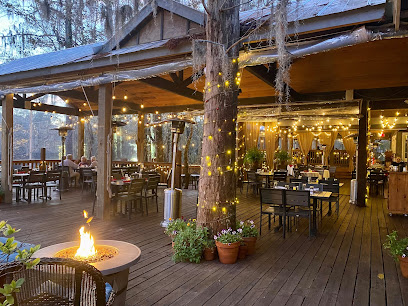
Tacos & Beer
Experience the vibrant flavors of Mexico at Tacos & Beer in Slidell—where every bite is a fiesta!

Rivershack Tavern
Experience the vibrant spirit of Louisiana at Rivershack Tavern, where delicious food, live music, and a welcoming atmosphere merge seamlessly.

BJ's Restaurant & Brewhouse
Experience the vibrant dining atmosphere at BJ's Restaurant & Brewhouse in Slidell, where delicious food and craft beer await you.

Hooters
Experience the vibrant American sports culture at Hooters in Slidell, LA, with delicious chicken wings and a lively bar atmosphere.

Barley Oak
Experience the vibrant nightlife at Barley Oak, a lakeside bar in Mandeville, LA, famous for craft beers, delicious food, and live music.
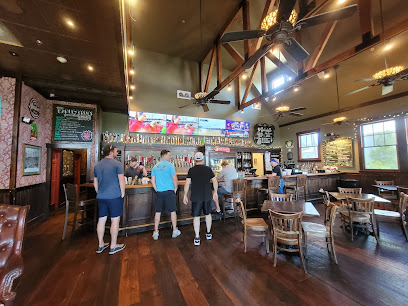
Times Grill
Discover the vibrant flavors of Times Grill in Slidell, Louisiana, a favorite spot for burger enthusiasts and sports fans alike.
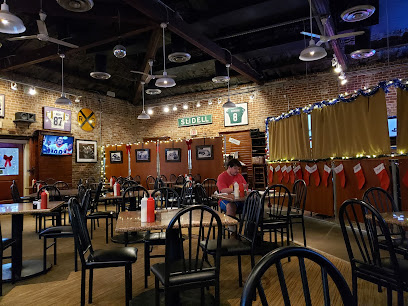
Abita Brew Pub
Experience the best of Abita Springs at Abita Brew Pub, where craft beer meets delicious American dining in a charming atmosphere.
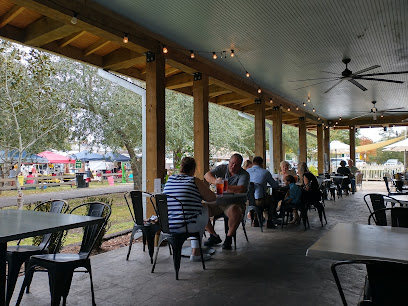
Jazzy Pete's Poboys
Experience the authentic taste of Louisiana at Jazzy Pete's Poboys, a must-visit for seafood and po' boy lovers in Slidell.
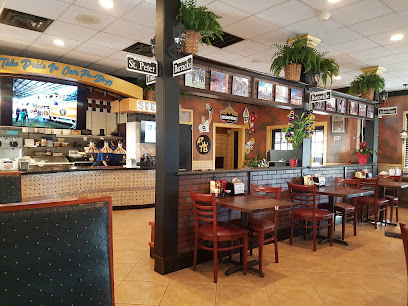
Swamp Room
Experience the vibrant flavors of Louisiana at Swamp Room, a lively grill in Metairie, perfectly blending delicious cuisine and southern hospitality.
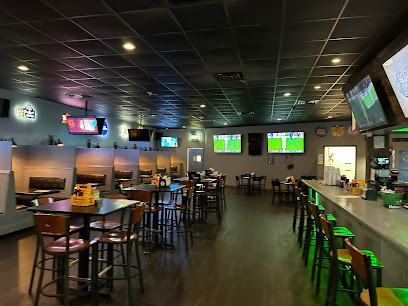
Sonic Drive-In
Experience the nostalgia of American fast food at Sonic Drive-In in Pearl River, Louisiana, with delicious burgers, shakes, and carhop service.

Restaurant Cote
Discover the flavors of Southern cuisine at Restaurant Cote in Slidell, where every dish is a celebration of local ingredients and hospitality.
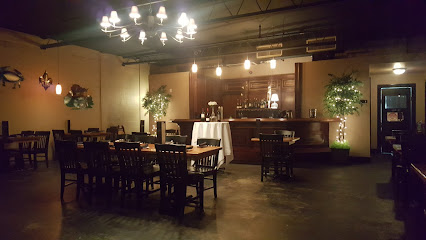
T Rivers Bar & Grill
Discover the lively atmosphere and delicious seafood at T Rivers Bar & Grill in Madisonville, Louisiana. Perfect for dining, events, and sports!
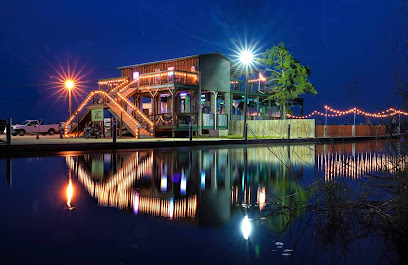
Local Phrases about Honey Island Swamp
-
- HelloHowdy
[Hou-dee] - GoodbyeSee ya later
[See ya lay-ta] - YesYeah
[Yah] - NoNaw
[Nah] - Please/You're welcomePlease/You're welcome
[Pleez/Yer welcome] - Thank youThank ya
[Thank yah] - Excuse me/SorryPardon me
[Pah-dun me] - How are you?How y'all doin'?
[Hou y'all doin'] - Fine. And you?Fine. An' you?
[Fine. An' yah?] - Do you speak English?Ya speak English?
[Yah speak Ing-lish?] - I don't understandI ain't catchin' on
[I ain't catchin' on]
- HelloHowdy
-
- I'd like to see the menu, pleaseShow me the grub list, please
[Show me the grub list, please] - I don't eat meatI ain't touchin' no meat
[I ain't touchin' no meat] - Cheers!Cheers!
[Cheers!] - I would like to pay, pleaseI'm ready to settle up
[I'm ready to settle up]
- I'd like to see the menu, pleaseShow me the grub list, please
-
- Help!Help!
[Help!] - Go away!Git!
[Git!] - Call the Police!Call the Po-leece!
[Call the Po-leece!] - Call a doctor!Call a doc!
[Call a doc!] - I'm lostI'm turned around
[I'm turned around] - I'm illI'm feelin' poorly
[I'm feelin' poorly]
- Help!Help!
-
- I'd like to buy...I'm lookin' to get...
[I'm lookin' to get...] - I'm just lookingI'm just browsin'
[I'm just browsin'] - How much is it?What's the damage?
[What's the damage?] - That's too expensiveThat's a rip-off
[That's a rip-off] - Can you lower the price?Can ya knock some off?
[Can ya knock some off?]
- I'd like to buy...I'm lookin' to get...
-
- What time is it?What's the time?
[What's the time?] - It's one o'clockIt's one
[It's one] - Half past (10)Half past ten
[Half past ten] - MorningMornin'
[Mornin'] - AfternoonAfternoon
[Afternoon] - EveningEvenin'
[Evenin'] - YesterdayYest'day
[Yest'day] - TodayToday
[Today] - TomorrowTomorra
[Tomorra] - 1One
[Wun] - 2Two
[Too] - 3Three
[Three] - 4Four
[Four] - 5Five
[Fahv] - 6Six
[Six] - 7Seven
[Sev'n] - 8Eight
[Ate] - 9Nine
[Nine] - 10Ten
[Ten]
- What time is it?What's the time?
-
- Where's a/the...?Where's the...?
[Where's the...?] - What's the address?What's the street?
[What's the street?] - Can you show me (on the map)?Can ya point it out?
[Can ya point it out?] - When's the next (bus)?When's the next (bus)?
[When's the next (bus)?] - A ticket (to ....)A ticket (to ....)
[A ticket (to ....)]
- Where's a/the...?Where's the...?
History of Honey Island Swamp
-
Long before European settlers arrived, Honey Island Swamp was home to various Indigenous tribes, including the Choctaw and the Houma. These tribes thrived in the swampy environment, utilizing its resources for food, shelter, and transportation. Artifacts such as pottery, tools, and shell mounds have been discovered, offering a glimpse into their rich cultural heritage.
-
In the 18th century, the area that is now Honey Island Swamp came under the influence of both French and Spanish colonial powers. The French settlers named the area 'Ile de Miel' due to the abundance of wild honeybees. Spanish rule followed, bringing with it new cultural influences and trade practices. The legacy of these colonial periods is still evident in local place names and cultural traditions.
-
During the American Civil War, the swamp served as a natural barrier and a hiding place for Confederate soldiers and runaway slaves. After the war, during the Reconstruction era, the swamp's remote location attracted those looking to start anew, including freed African Americans and displaced Southerners. The swamp's dense foliage and waterways provided both refuge and resources for these communities.
-
The late 19th and early 20th centuries saw a boom in the logging industry within Honey Island Swamp. The swamp's cypress trees were highly valued for their durable wood, leading to extensive logging operations. Small communities and logging camps sprang up, and the timber industry became a significant economic driver for the region. However, over-logging eventually led to environmental degradation, prompting conservation efforts in the later 20th century.
-
The latter half of the 20th century marked a shift towards environmental conservation in Honey Island Swamp. Recognizing the ecological importance of the swamp, conservationists and local authorities worked to protect its unique flora and fauna. The establishment of the Pearl River Wildlife Management Area in 1963 was a significant step in preserving the swamp's natural beauty and biodiversity. Today, Honey Island Swamp is a protected area, renowned for its pristine wilderness and rich wildlife.
-
Honey Island Swamp is steeped in local legends and folklore. Perhaps the most famous is the tale of the Honey Island Swamp Monster, a Bigfoot-like creature said to inhabit the swamp. First reported in the early 20th century, sightings of this mysterious creature have fueled imaginations and attracted cryptozoologists from around the world. Additionally, the swamp is home to ghost stories and tales of hidden treasures, adding to its mystique and allure.
-
In recent decades, Honey Island Swamp has become a popular destination for eco-tourism. Visitors can explore the swamp through guided tours, which offer insights into its history, wildlife, and ecological significance. These tours often highlight the swamp's historical landmarks, indigenous flora and fauna, and the ongoing efforts to preserve this unique ecosystem. The blend of natural beauty and cultural history makes Honey Island Swamp a fascinating destination for travelers.
Honey Island Swamp Essentials
-
Honey Island Swamp is located in St. Tammany Parish, Louisiana. The nearest major city is New Orleans, approximately 45 miles away. The closest airport is Louis Armstrong New Orleans International Airport (MSY). From the airport, you can rent a car or take a taxi or rideshare service to reach the swamp. Alternatively, organized tours often include transportation from New Orleans.
-
Having a car is the most convenient way to explore Honey Island Swamp. Rental cars are available at Louis Armstrong New Orleans International Airport. If you prefer not to drive, guided swamp tours often provide transportation from New Orleans. Taxis and rideshare services are options, but may be costlier. Public transportation options are limited, so plan accordingly.
-
The official currency is the US Dollar (USD). Credit and debit cards are widely accepted in New Orleans and surrounding areas, including for swamp tours. However, it is advisable to carry some cash for smaller vendors and tips.
-
Honey Island Swamp is generally safe for tourists, especially when visiting with a guided tour. However, it is advisable to stay vigilant and follow standard safety precautions. Avoid wandering into unfamiliar or restricted areas of the swamp. New Orleans has some neighborhoods with higher crime rates, so research and avoid these areas, especially at night.
-
In case of emergency, dial 911 for immediate assistance. For health emergencies, the nearest hospitals are in Slidell, LA, about 15 miles from the swamp. It's recommended to have travel insurance that covers medical emergencies. For minor issues, there are pharmacies in nearby towns.
-
Fashion: Do wear comfortable, weather-appropriate clothing and sturdy shoes. Don't wear open-toed shoes as the terrain can be rough. Religion: There are no specific religious customs to observe, but always respect local traditions. Public Transport: Public transportation is limited; plan on renting a car or using tour services. Greetings: Do greet locals with a friendly hello. Eating & Drinking: Do try local cuisine like crawfish and gumbo. Don't litter; keep the natural environment clean.
-
To experience Honey Island Swamp like a local, consider taking a small-group eco-tour with a local guide who can share detailed information about the flora and fauna. Visit during the early morning or late afternoon for the best wildlife viewing opportunities. Don't miss trying the local seafood in nearby towns like Slidell.
Trending Landmarks in Honey Island Swamp
-
Audubon Aquarium
-
Audubon Insectarium
-
Honey Island Swamp Tours
-
Maurepas Swamp Wildlife Management Area
-
Pearl River Wildlife Management Area
-
Pearl River Swamp Tours
-
Audubon Louisiana Nature Center
-
Bogue Chitto National Wildlife Refuge
-
US Custom House
-
Pearl River - Honey Island Swamp Museum & Research Center
-
Cat Island Cypress
-
Honey Island Swamp Kayak Tours - Guided Bayou Tours
-
Honey Island Swamp Monster
Nearby Cities to Honey Island Swamp
-
Things To Do in New Orleans
-
Things To Do in Gulfport
-
Things To Do in Biloxi
-
Things To Do in Hattiesburg
-
Things To Do in Houma
-
Things To Do in McComb
-
Things To Do in Petaluma
-
Things To Do in Baton Rouge
-
Things To Do in Mobile
-
Things To Do in Fairhope
-
Things To Do in Daphne
-
Things To Do in Gulf Shores
-
Things To Do in Foley
-
Things To Do in Orange Beach
-
Things To Do in Natchez


